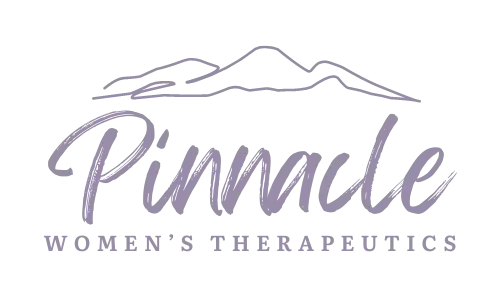Almost half of all women will experience pelvic pain at some point in their lifetime. This could be pain with gynecologic exams, sexual intercourse, pain and irritation of the vulva or skin on the outside of the vaginal opening, a deep ache with standing for long periods, pain into the lower abdomen, and more.
And just as there are many types of pelvic pain, there are even more possible causes of pelvic floor pain. I am going to talk about 8 possible reasons why a person may experience pelvic pain. While this list is not exhaustive, the goal is to help us understand how complex and varied this issue can be.
1). Overuse of muscles in the belly and pelvic floor:
It is not uncommon for women to begin to habitually draw in their abdominal muscles throughout the day. With the societal pressures for women to appear as though they have a flat stomach, many women will continuously “suck it in”. They will do it so often that it becomes a subconscious habit.
This can then later result in their core muscles being unable to do a simple belly breath as they cannot unclench their abdomen. This will then impact the pelvic floor muscles as they will be tagging along with the belly and clench all day as well.
This “over-clenching” can also occur when a person feels they need to be gripping their pelvic floor muscles to prevent a feeling of their organs moving downward or to prevent bladder leakage. Either way, pelvic floor muscles that become perpetually clenched will very often also become painful.
2). Abdominal surgery including c-section:
Though one would think they are spared from having any pelvic floor muscle issues with a c-section, many are surprised when they find that they in fact do have painful sex after childbirth. This would likely be due to the scar tissue induced tissue restrictions that will influence the pelvic floor muscles as it is really not very far from the pelvic floor muscles. The post surgical protective gripping of the the abdomen may also cause the pelvic floor muscles to remain tense as well.
3). Pelvic floor trauma or injury:
Pelvic floor trauma can include perineal tears during childbirth or with abuse. Scar tissue can cause restrictions in tissue mobility and result in pelvic floor pain. Pelvic floor muscles will often get into a learned pattern of guarding and tensing in response to pain and get to a point where these muscles are unable to release or relax.
4). Vaginal dryness:
This is most often an issue in the postpartum period when hormones are still readjusting and we have low estrogen as well in the postmenopause phase. Adequate lubricant will be crucial to experience vaginal penetration pain free.
5). Bladder pain that leads to pelvic floor muscle pain:
Bladder pain syndrome is a condition that affects as many as 3-8 million women in the United States. Perpetually feeling the urge to empty one’s bladder and often severe pain with emptying the bladder. With the pelvic floor being so close to the bladder and sharing in the process of emptying the bladder, it is not uncommon for these women to also develop issues with pelvic floor muscle pain in addition to bladder pain.
6). Bacterial Infections or altered flora:
Chronic vaginal infections can cause pain during the infection and as a result, cause the pelvic floor muscles to “guard” protectively and tense up. Skin can also become more sensitive and lead to pain with light touch to the vulva or tissue around the vaginal opening.
7). Endometriosis:
Although endometriosis is an internal disease that affects organs and tissue inside the body, chronic internal and abdominal pain will often result in the pelvic floor muscles protectively gripping. Also, many women will experience GI issues and discomfort like “endo belly” with excessive gas and bloating. This will lead to the abdominal muscles being habitually tense as well.
8). Overtraining of muscles of the pelvis and pelvic floor with sports:
As an old ballet dancer, I would credit much of the posturing and training in ballet with the tailbone tucked under and belly gripped tightly to my experience of pelvic floor muscle pain and tension. And this is also quite common for other sports including running, gymnastics, horseback riding, volleyball, and more.
None of these sports are inherently “bad” for our bodes. It is the exclusive training in one sport that reduces the variety of movements our body has exposure to. And with most sports these days, as a young athlete gets older, they usually do one main activity or sport.
For an athlete (or od athlete) that may be experiencing pelvic pain, it is important to identify the muscle imbalances and address them. This could be excessively tight inner thigh muscles or hip flexors. It could also be the learned inability to squat or bend over without keeping the tailbone tucked under.
As you can see, there isn’t just ONE possible cause for pelvic floor pain. This also means that there is not just ONE treatment protocol for pelvic pain. Anyone experiencing pelvic pain should be assessed by a pelvic floor physical therapist. This assessment needs to be a thorough full body assessment where the therapist is the detective in finding THEIR possible causes of pelvic floor pain.
A great place to begin the journey to LESS pain, is by starting with the pelvic tension series of exercises. Through these exercises, we can begin to pinpoint areas of excessive tension or tightness and begin working on our breathing which will be crucial to making the needed changes to help resolve the muscular component of pain.




